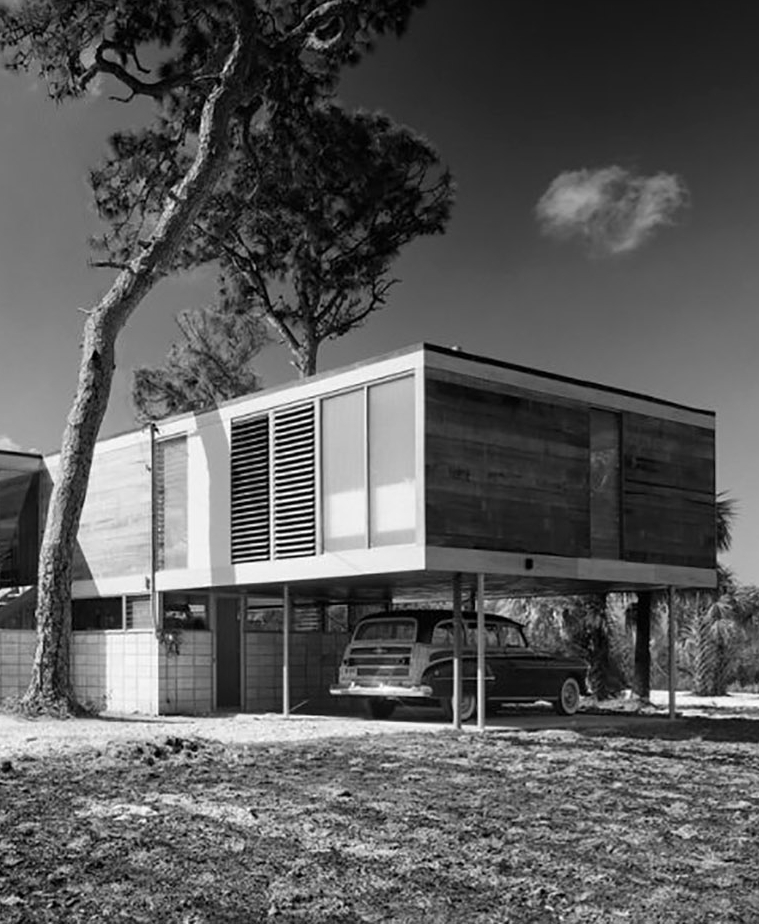PAUL RUDOLPH
Initially rising to prominence for his key role in the development of the Sarasota Modern architectural style, American architect Paul Rudolph went on to become the chair of Yale University's Department of Architecture for six years. Later in his career, Rudolph became known for his use of concrete and highly complex spatial configurations. His most famous work is the Yale Art and Architecture Building (A&A Building), an imposing, fortress-like concrete structure that helped usher in the Brutalist architecture movement.
"An architect is a man concerned with building meaningfully. As opposed to someone who is interested in building efficiently, or sometimes even beautifully. We often apologize for being interested in meaningful buildings, but we do our profession an injustice in that way."
– Paul Rudolph
In the early 1940s, Rudolph studied architecture under Bauhaus founder Walter Gropius at the Harvard Graduate School of Design. After graduating, Rudolph moved to Florida and partnered with architect Ralph Twitchell for four years before starting his own practice. Together, Rudolph and Twitchell were instrumental in developing an innovative architectural style called the Sarasota School.
Sometimes called Sarasota Modern, the Sarasota School of Architecture is characterized by its adaption of "International Style" architecture to the Florida climate. Large sunshades, natural ventilation systems, full-height sliding glass doors, single-depth floor plans (no corridors), and walls of jalousie windows characterize many of these buildings, mostly built between 1941 and 1966.
Rudolph's Sarasota buildings created a sensation in architectural circles and led to the second phase of his career, which included a move to New York and many high-profile commissions for universities, museums, and government buildings in the U.S. and parts of Asia. Near the end of his life, Paul Rudolph donated his archive, spanning his entire career, to the Library of Congress. His bequest also helped to establish the Center for Architecture, Design, and Engineering at the Library of Congress.




